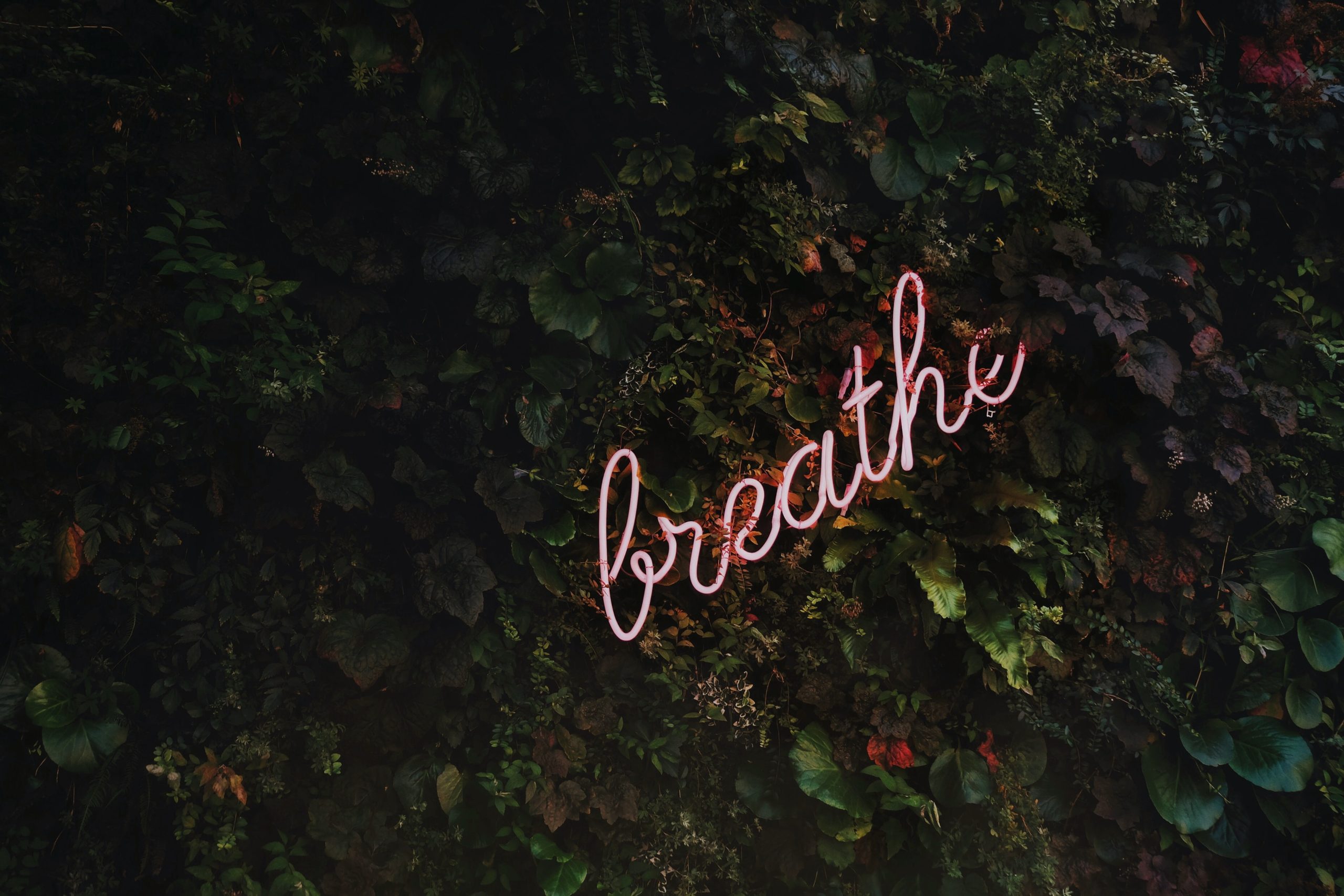There is no doubt that if you are a human on earth, then you have probably felt more stress than normal over the last 5 months. Being in a global pandemic is stressful no matter where you stand politically on the issue. There is no denying that the stress that came with this pandemic was overwhelming, and for a lot of people, it is starting to catch up with their health. So, we brainstormed what advice we could provide that would be actually beneficial, and we landed on meditation. If you have never meditated before then don’t worry you are not alone and in the right place. We certainly do not have the qualifications to give you educated information on this topic. That being said we asked some of our favorite wellness experts to weigh in on meditation for beginners. The result? We produced the ultimate beginner’s guide to meditation. Scroll on to see the tips for yourself, your central nervous system will thank you!
Image via @makespaceforlove
Think About the Why.
“Beginning any new lifestyle change takes a slow-paced, big-picture mentality and lots of self-compassion. I recommend that you take a little time and think about why you’re wanting to get into meditation. Is it to have a few tools in your toolbox to squelch those moments of intense anxiety? Is it to improve your relationships? To forgive someone? To connect more meaningfully with a community? To work toward overall personal growth? To train your brain to be more focused? Having a goal in mind from the start will keep you on the right track with the right people to help you on your path. You can begin to take small regular steps, fully trusting that each one is steadily leading you to a better self. Rest assured that even if you abandon meditation for a time, that it is always there for you. You are on a continuous, life-long mindfulness journey.” – Emily Tuttle, Founder of Pause + Purpose
Trust Yourself.
“You can’t do it wrong. Your body is always breathing, beating, and healing —just waiting for you to notice. You can’t turn off your thoughts, but you can choose to turn on the connection to your breath, heartbeat, authentic feelings, and emotions without going down the rabbit hole with them. It will be challenging and it should be, you’re learning a whole new way to communicate with yourself. Ekhart Tolle says, “Just like you have a beating heart, you have a thinking mind.” Your thoughts will continue to come and go as you consistently redirect your focus back to your breath and body. This will happen over and over and over again and that’s the point, you are retraining the focus of your mind-body connection and your ability to witness the incredible design of your own body. This choice alone increases appreciation and dedication to your health and well being which will have a ripple effect into everything else you do. Even just 5 minutes (every morning or evening, or both!) of mindful attention to the functions and sensations of your body can greatly reduce stress and support your nervous and immune systems.
Again, you can’t do it wrong and you can choose to return to your breath absolutely anytime —no matter the time of day or setting —just close your eyes (OR please note: if this causes you any anxiety at all, simply fix your eyes on one single soothing point, like a burning candle), breathe in slowly and steadily, and then breathe out just as patiently. Repeat until you find a rhythm and when you lose it (not if), appreciate your humanness and start again. If you find your breath is choppy or shallow, go slower. Be patient with yourself. Hold the breath at the top of your inhale and at the bottom of your exhale to make some more space between the breaths. Take. Your. Time. This is not a race, its a practice, which means there is no goal other than to keep repeating it, regularly, just like any good practice requires we do.” -Paula Pavlova, Founder of Pavlova Wellness

Make it Calm and Cozy.
“Design your meditation space with comfort and ease in mind as essential to the experience. Think cushions, crystals, soft light, soothing scents, and nature sounds or gentle music. For me, I like to have my meditation space right by my bed. This minimizes the distractions between waking up and meditating and reminds me to take a seat and breathe for a moment before I go to bed, every night. If you have a preferred meditation space that is in another part of your home or even outside, create a daily or nightly ritual surrounding it so that you have a simple pattern that gets you into the headspace for meditation. This kind of mindfulness surrounding your routine before and after meditation will help keep you committed and regular with this mental hygiene practice –just like washing your face and brushing your teeth.
Make sure that wherever it is you find yourself setting up to meditate, that there ZERO distractions –physically, mentally, or emotionally. Surround yourself with items that remind you of your potential and self-worth and STRETCH! That’s right, your body will get stiff so stretching before and after is key to getting your blood and energy flowing so that you can enjoy your meditation practice for longer. If you are uncomfortable in your seat, make a change, but don’t fidget. Fidgeting is just another way the mind tries to get in the way of being fully present with your practice. Lastly, make space for integration of these practices every morning and every night by keeping your devices on airplane mode (with wifi off!) between certain hours, such as 7 pm and 9 am every morning, or whatever window of time works for you! This way, you will ease into your meditation and reflection time with more ease and perhaps even a deeper sense of connection to your creativity and authentic self.” – Paula Pavlova, Founder of Pavlova Wellness

Break it Down.
“Follow through with your intention to improve mental health, reduce stress, improve cognitive function, increase your happiness and it’s all FREE! And there are no negative side effects! Commit to sitting tall in a comfortable surrounding, without distraction. Keep your spine straight, legs uncrossed, and drop expectations….you’re unfolding. Relax any tense muscles in your body. Find music, repeated mantra (single word, like “peace”) a guided meditation that is 10-20 minutes in length. All meditation tools can be found on your smartphone. Gently close your eyes and begin to take a few cleansing breaths by inhaling slowly through your nose and exhaling out through your mouth. Then begin nostril breathing only. Relax your body further and focus your attention on the breath, mantra or guided meditation. You will become the observer to your thoughts In a relaxed way. Stay with your breath and your experience without judgment. Acknowledge that you are spending quality time with your self and discovering your inner journey. Similar to physical workouts, you’ll appreciate the multiple benefits after” – Alaine Portner
Just Do It.
Perhaps the most well-known wellness tip out there (thanks, Nike)! All jokes aside, it’s also one of the truest ones out there. Your body is craving for you to just drop into your presence but your mind will try to sabotage you because we have been convinced by modern culture that we must always be outwardly “doing.” Don’t let this inner saboteur get you. Just sit down and do it by letting yourself be it. Be still. Be silent. Be in awe of all that your body is already doing, all the time. A couple of breaths in, you’ll be past the action of getting yourself to sit down and you will move quickly from DOING to BEING. You have to make the choice to get yourself there and then remember that you GET to be there. Your breath and your body and the stillness you find is a gift you GET to give yourself. This mindset will help you stay committed. Do not get discouraged. You’re still doing it exactly right. Every time you set out to meditate, your mind will try to give you an excuse as to why you should do x, y, or z instead. Actively choose to start your day in stillness and peace, every day, no matter what your mind throws in the way. Once you get in a rhythm with it (at least 21 days, that’s how long it takes to build a new habit) you will notice a huge difference. You’ll also want to sit longer. 5 minutes will begin to feel like 1 minute and eventually you might be able to work your way up to 20 or 30minutes!” – Paula Pavlova, Founder of Pavlova Wellness







